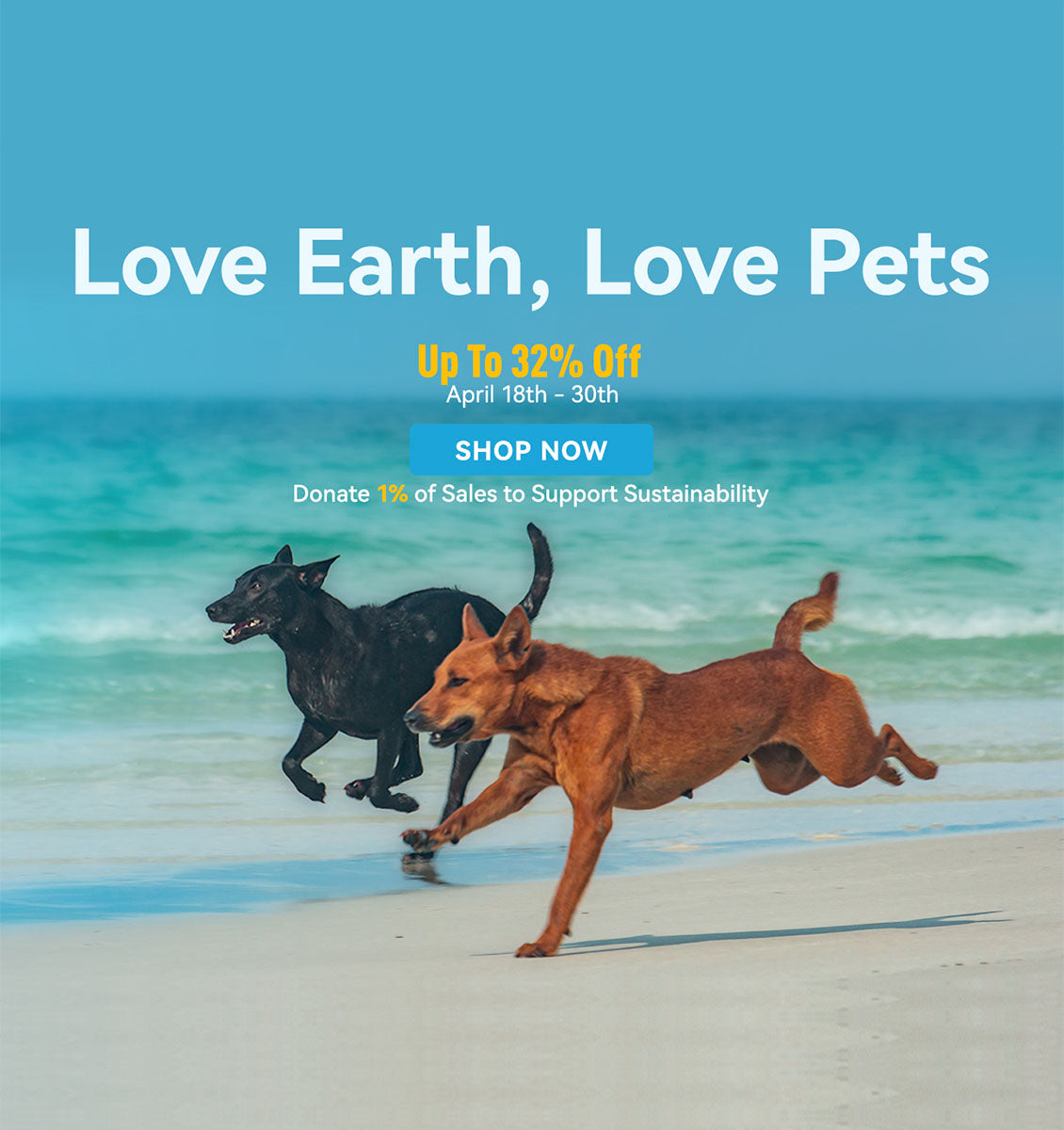
In today's world, where environmental concerns are at the forefront of global discussions, adopting eco-friendly practices has become increasingly important. This holds true not only for human lifestyles but also for the way we care for our beloved pets. As awareness grows about the impact of pet ownership on the environment, more people are seeking ways to minimize their carbon pawprint. In this article, we'll delve into the various aspects of living eco-friendly with pets and how pet owners can make conscious choices to reduce their environmental impact.
Sustainable Pet Care Products
Transitioning to a sustainable pet care routine involves a conscientious shift in the products we choose to use for our furry companions. Traditional pet care products, including litter, grooming supplies, and food, often contain a plethora of chemicals and materials that can have detrimental effects on the environment. These products contribute to pollution, resource depletion, and environmental degradation. However, by opting for sustainable alternatives, pet owners can significantly reduce their ecological footprint and promote a healthier planet for both humans and animals alike.
- Biodegradable Litter: One significant aspect of sustainable pet care is the choice of litter for cats. Traditional clay-based cat litter not only contributes to the depletion of natural resources but also adds to landfill waste as it does not decompose easily. On the other hand, biodegradable litter options, such as those made from recycled paper, wood pellets, or plant-based materials like corn or wheat, offer a more environmentally friendly alternative. These litters break down naturally over time, reducing the strain on landfills and minimizing environmental impact.
- Pet Grooming Products: There has been a growing awareness among pet owners about the potential risks associated with chemical-based grooming products for their beloved companions. As a result, many pet owners are now opting for sustainable grooming solutions that prioritize the well-being of their pets and the planet. The Oneisall Pet Grooming Vacuum offers a safe and sustainable alternative for pet grooming. With its innovative design, pet owners can easily groom their furry friends at home, eliminating the need for frequent visits to the groomer and reducing exposure to harmful chemicals. This Pet Grooming Vacuum is built to last, with a long lifespan that significantly reduces waste and resource consumption.
- Organic Pet Food Options: The type of food we feed our pets also plays a significant role in their health and the environment. Conventional pet foods often contain ingredients sourced from factory farms, which contribute to deforestation, water pollution, and greenhouse gas emissions. Organ c pet food options, on the other hand, are made from high-quality, sustainably sourced ingredients that are free from pesticides, antibiotics, and genetically modified organisms (GMOs). These foods promote animal welfare, support sustainable farming practices, and reduce the environmental impact of pet food production.
Reducing Your Pet's Carbon Pawprint
Reducing your pet's carbon pawprint involves proactive measures beyond simply selecting eco-friendly products. By implementing simple yet effective strategies, pet owners can minimize their environmental impact while ensuring the well-being of their furry friends.
- Minimizing Waste: One effective way to reduce your pet's carbon pawprint is by minimizing waste. This can be achieved by opting for reusable or recyclable pet accessories such as food and water bowls, toys, and bedding. By choosing durable, long-lasting items, pet owners can significantly decrease the amount of waste generated over time.
- Choosing Energy-Efficient Pet Appliances: Another crucial step is to invest in energy-efficient pet appliances. From water fountain to heating pads, choosing appliances with high energy efficiency ratings can help lower electricity consumption and reduce your pet's carbon footprint. Additionally, turning off appliances when not in use and unplugging chargers can further conserve energy and minimize environmental impact.
- Opting for Eco-Friendly Transportation Methods: Pet travel also contributes to carbon emissions. but pet owners can minimize this impact by opting for eco-friendly transportation methods. Whenever possible, choose walking or cycling as modes of transportation for short trips with your pet. For longer journeys, consider using public transportation or carpooling to reduce emissions. Additionally, electric or hybrid vehicles offer environmentally friendly alternatives for pet travel.
Incorporating Pets into a Green Lifestyle
Incorporating pets into a green lifestyle is essential for promoting sustainability within households. By adopting eco-friendly practices across various aspects of pet care. individuals can minimize their environmental impact while ensuring the well-being of their pets.
- Creating DIY Pet Toys: One way to integrate pets into a sustainable household is by creating DIY pet toys using recycled materials. From cardboard boxes to old fabric scraps, there are countless materials that can be repurposed into engaging toys for pets. Not only does this reduce waste by giving new life to old items, but it also provides pets with mentally stimulating and environmentally friendly play options.
- Utilizing Environmentally Safe Cleaning Products: Another important aspect of green pet care is using environmentally safe cleaning products. Traditional cleaning products often contain harmful chemicals that can be toxic to pets and harmful to the environment. By opting for natural and biodegradable cleaning solutions, such as vinegar, baking soda, and eco-friendly detergents, pet owners can ensure a clean and safe living environment for their pets while minimizing their ecological footprint.
- Reducing Energy Consumption: Reducing energy consumption is another key component of incorporating pets into a green lifestyle. This can be achieved by using energy-efficient lighting and appliances throughout the home. LED light bulbs, energy-efficient heating and cooling systems, and programmable thermostats are just a few examples of eco-friendly options that can help minimize energy usage and lower utility bills. By reducing energy consumption, pet owners not only save money but also reduce their environmental impact and promote a more sustainable lifestyle for themselves and their pets.
- Contributing to an Eco-Conscious Community: Ultimately, incorporating pets into a green lifestyle contributes to creating a more eco-conscious and responsible community. By setting an example through sustainable pet care practices, individuals can inspire others to adopt similar habits and contribute to a collective effort towards environmental conservation. By working together to minimize our environmental impact. we can create a healthier and more sustainable future for all living beings.
Sharing Environmentally Friendly Life
Sharing an environmentally friendly life with pets involves more than just individual efforts; it's about fostering a culture of sustainability within communities. By leveraging the power of social media and engaging with like-minded individuals, pet owners can spread awareness about the benefits of an eco-friendly pet lifestyle and inspire others to join the movement.
- Utilizing Social Media Platforms: Social media platforms provide a powerful tool for sharing information and ideas. Pet owners can use platforms like Instagram, Facebook, and Twitter to showcase their eco-friendly pet care practices, share tips and resources, and highlight the positive impact of sustainable choices. By posting photos, videos, and stories of their eco-friendly pet routines, individuals can inspire their followers to adopt similar practices and contribute to a more sustainable future.
- Engaging with Like-Minded Individuals: Connecting with other pet owners who share a passion for sustainability can amplify efforts to promote eco-friendly pet care. Joining online communities, forums, or local eco-friendly pet groups allows individuals to exchange ideas, seek advice, and collaborate on initiatives aimed at reducing environmental impact. By building a network of support and collaboration, pet owners can strengthen their commitment to sustainable living and inspire collective action within their communities.
- Encouraging Family Participation: Involving family members, including pets, in environmental protection efforts fosters a sense of shared responsibility and accountability. By engaging children in eco-friendly activities such as gardening, recycling, and conservation projects, parents can instill lifelong values of sustainability and environmental stewardship. Similarly, including pets in outdoor activities like hiking, camping, or beach clean-ups reinforces the importance of respecting and preserving nature.
Wrapping Up
In conclusion, living eco-friendly with pets is a holistic approach that encompasses conscious choices in pet care, lifestyle practices, and community engagement. By prioritizing sustainability in pet ownership, individuals can reduce their environmental impact while fostering a healthier and happier environment for both pets and humans alike. Embracing eco-friendly pet care practices not only benefits the planet but also sets an example for future generations to follow. Let's commit to making a positive difference one pawprint at a time.
